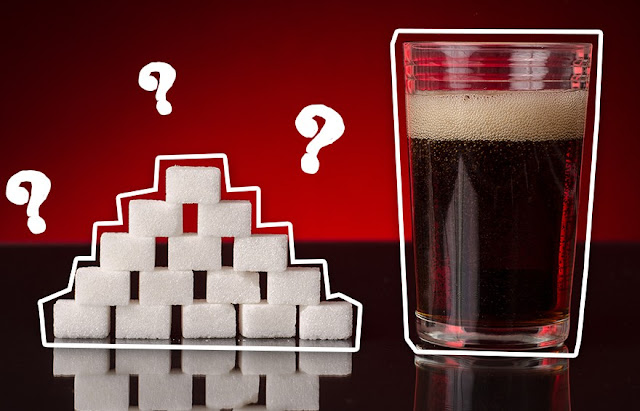As temperatures rise around the world in the Northern Hemisphere, everyone is bracing for a blazing hot summer. Many of us like to be outdoors enjoying the long daylight hours; however, extended exposure to the heat of the sun results in loss of fluids. This causes fatigue and raises the body temperature. These are often the first signs and symptoms of heat exhaustion or sunstroke.
Young children and elderly people face the maximum risk, but heat exhaustion or sunstroke can affect persons of any age. Even animals are frequently affected by sunstroke so it is equally important to take care of their needs as well.
Symptoms of sunstroke:
- Fatigue
- Muscle cramps due to loss of electrolytes
- Nausea and/or vomiting
- Dizziness
- Confusion
- Headache
- Raised body temperature with no sweat
- Rapid heart beat
- Fainting
Complications of sunstroke:
In extreme conditions, sunstroke can cause convulsions, hallucinations, brain damage, and death. Since babies, young children, and the elderly are more prone to be affected by heat exhaustion, it is important to take steps to prevent the onset of severe signs and symptoms.
Sunstroke Remedies:
At home sunstroke remedies are easy to follow and can prevent and relieve both severe and mild sunstroke symptoms. Here are simple and quick home remedies for sunstroke that you can follow to put you out of your pain.
1. Drink lots of Water
On an average you must consume at least 1.5 liters of water daily to keep yourself hydrated. Now, in summers since you are sweating more and its very hot, the requirement of water for the body increases. So, the first and foremost thing to do in summers to avoid heatstroke is to drink lots and lots of water.
2. Avoid too much exposure to Sun
Do not expose yourself to high temperatures in the sun for a long time. Try to keep yourself indoors at work place or home, especially in the afternoons. If you can manage to be in an air conditioned or a well-ventilated room, it is best. If you must stay outdoors, always try to stay in the shade.
3. Onions
Onion is a great friend in the summer. It has good heat absorbing property. Keeping one white onion in your pocket or purse will help you avoid sunstroke. Applying thick onion paste on the affected person’s forehead is also an effective sunstroke treatment.
4. Fenugreek
Fenugreek has innumerable health benefits in the form of fenugreek seeds, fenugreek oil, fenugreek powder, etc. Dried fenugreek leaves work magic in healing a person suffering from sunstroke. Soak dried fenugreek leaves in cold water and then crush them by hand. Add honey to it and sieve. Give this mixture every two hours to the victim, for quick healing results.
5. Green Mango
Nature always has a cure to its extremities, should we choose to recognize it. The seasonal fruit, green mango is a very good remedy for heatstroke. Keep the mango in hot ash. Peel the skin and extract the juice. Add water and sugar. Ice may be added, if desired. Drinking this juice 2-3 times a day will give you excellent relief.
6. Electrolyte Powder
Drink water along with electrolyte powders to regain or maintain mineral balance in your body that are usually depleted by the excessive heat.
7. Butter Milk
Buttermilk is a very simple and effective remedy for the summer heat. Drinking at least 2-3 glasses of buttermilk daily will help in keeping your body cool and maintain optimum temperatures.
8. Fresh Fruits
A good way to prevent sunstroke is to include lots of fresh fruits and vegetables in your daily diet. Watermelon, pineapple, cucumber, oranges, etc. are good in keeping the body cool during summer and preventing heat stress symptoms
First Aid for serious Sunstroke or Heat Stroke:
Anyone who is affected by sunstroke or heat exhaustion should be taken to the nearest hospital for administration of intravenous electrolytes if required. If immediate removal to a hospital is not possible, first aid measures should be followed until medical help is available.
2. MayoClinic.com. Heat exhaustion: first aid (updated 12 Jan 2010). http://www.mayoclinic.com/health/first-aid-heat-exhaustion/FA00020 (accessed Feb 2011).
3. MayoClinic.com. Heatstroke: first aid (updated 12 Jan 2010). http://www.mayoclinic.com/health/first-aid-heatstroke/FA00019 (accessed Feb 2011).
4. MayoClinic.com. Hot-weather exercise: how to keep cool (updated 27 Jun 2009). http://www.mayoclinic.com/health/exercise/HQ00316 (accessed Feb 2011).
5. Australian Government Department of Health and Ageing. 11 December 2009 - heat wave conditions - residential care. Important reminder for aged care providers in heat wave conditions (10 Dec 2009). http://www.health.gov.au/internet/main/publishing.nsf/Content/ageing-mailfax-2009-1112a.htm (accessed Feb 2011).
- Move the affected person into a shady area
- Remove any tight clothing
- Apply ice packs or wet towels
- Drinking cool fluids helps to lower the body temperature
- Drink preferably fluids that contain both sugar and salt (coconut water, homemade ORS solution, buttermilk, lemonade).
_______________
References:
1. Centers for Disease Control and Prevention (US). Extreme heat (updated 31 Jul 2009). http://www.bt.cdc.gov/disasters/extremeheat (accessed Feb 2011).2. MayoClinic.com. Heat exhaustion: first aid (updated 12 Jan 2010). http://www.mayoclinic.com/health/first-aid-heat-exhaustion/FA00020 (accessed Feb 2011).
3. MayoClinic.com. Heatstroke: first aid (updated 12 Jan 2010). http://www.mayoclinic.com/health/first-aid-heatstroke/FA00019 (accessed Feb 2011).
4. MayoClinic.com. Hot-weather exercise: how to keep cool (updated 27 Jun 2009). http://www.mayoclinic.com/health/exercise/HQ00316 (accessed Feb 2011).
5. Australian Government Department of Health and Ageing. 11 December 2009 - heat wave conditions - residential care. Important reminder for aged care providers in heat wave conditions (10 Dec 2009). http://www.health.gov.au/internet/main/publishing.nsf/Content/ageing-mailfax-2009-1112a.htm (accessed Feb 2011).
________________________
Read Also :
Forces Your Body to Treat Hemorrhoids In 48 Hours - Guaranteed! (watch the Video)
.













No comments:
Post a Comment